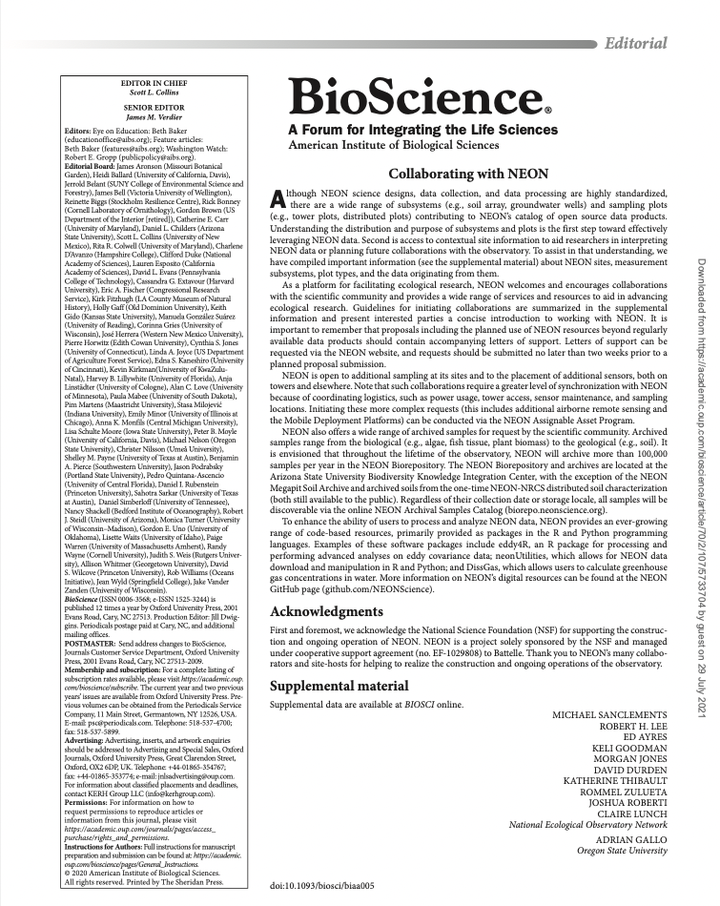Collaborating with NEON (National Ecological Observatory Network)

Abstract
Although NEON science designs, data collection, and data processing are highly standardized, there are a wide range of subsystems (e.g., soil array, groundwater wells) and sampling plots (e.g., tower plots, distributed plots) contributing to NEON’s catalog of open source data products. Understanding the distribution and purpose of subsystems and plots is the first step toward effectively leveraging NEON data. Second is access to contextual site information to aid researchers in interpreting NEON data or planning future collaborations with the observatory. To assist in that understanding, we have compiled important information (see the supplemental material) about NEON sites, measurement subsystems, plot types, and the data originating from them.
TLDR
The National Ecological Observatory Network (NEON) integrates hard infrastructure along with cloud-based data products that are publicly available. In this paper we advertised just some of the capabilities that NEON currently has, and describe how other site-specific instruments/observations may be incorporated. Download the PDF.